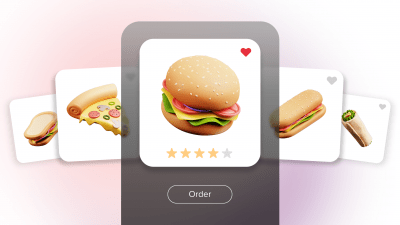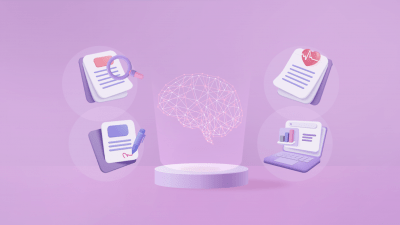Last Updated on: 7th July 2023, 09:05 am
Even if you leave the details to the experts, it’s important to understand exactly how the different components of your marketing campaign work together. This helps marketing managers to get a feel for how different service providers bring value, boost brand visibility, and ensures that the campaign’s budgets are being spent wisely. For consumer tech brands, and most anything else, two of the most powerful tools in your arsenal are branding campaigns and retargeting campaigns, especially when used in concert and optimized with Deep Learning algorithms.
Ready to learn more? Let’s dive in.
Table of Contents:
- Branding Campaigns Build Awareness
- Retargeting Campaigns Keep Customers Engaged
- Deep Learning Helps Maximize The Benefits of Brand Awareness and Retargeting Campaigns
Branding Campaigns Build Awareness
Branding campaigns can feel a little fuzzy compared to conversion-focused campaigns. The goal generally isn’t to directly convert users (although a good campaign will drive some conversions!). Instead, marketing managers should be looking for providers that can maximize campaign reach or the number of impressions and interactions with a given ad.
Done correctly, a branding campaign can help to forge deep connections with new and former customers, and increase the potential of users reacting positively when they next interact with a brand, even leading to an eventual conversion.
Branding campaigns are particularly useful because they target users typically missed by campaigns that focus on conversions. You are able to introduce new users to your brand, and spark connections that you would otherwise miss out on, thus boosting brand visibility.
In a consumer technology context, this is all about reaching users who may not have heard of your product or brand. Let’s say you’re launching a flagship phone with a killer camera, like the Google Pixel 6 Pro. Your brand isn’t as well known for great cameras as Samsung’s S22 Ultra, or Apple with its iPhone 13 Pro. This means that you need to educate users about the camera qualities on the Pixel 6 Pro. The best way to do this is to reach users in the research, or consideration phase, who have shown interest in photography.
While being less directly ROAS driven than other types of campaign, branding can generate real results. For example, RTB House helped O2 Slovakia to drive 5.5 million impressions a month. This in turn translated to a boost in click-through rate (CTR), and ultimately conversions for O2.
So, we know that brand awareness campaigns are great at reaching new users and engaging them in your brand. Now we move to the next piece of the puzzle, how do we actually convert those users? This is where retargeting campaigns come in.
Retargeting Campaigns Keep Customers Engaged
Jumping back to our previous example. Let’s assume that your branding campaign has been a huge success. You’ve got millions of eyes on your Pixel 6 Pro, customers are seriously considering it. How do you tip the balance, and ensure they don’t decide to go with a Samsung or Apple model? By ensuring that you have as many opportunities as possible to make connections with your customers.
Did you know: On average 95% of users don’t make a purchase on their first visit, retargeting helps you re-engage them
The best way to do this is retargeting. You know that users have interacted with one of your ads, or even placed a product in the cart and then abandoned it. Since you know that this user interested, it makes sense to show them creatives that highlight the best features of your product. Done intelligently, this allows you to show customers highly personalized content that will help keep the conversation moving towards a purchase.
Retargeting campaigns can be highly effective. RTB House helped 99.co, a leading real estate technology company in South East Asia, to get a cost per action (CPA) twice as efficient as their target metrics. The campaign also helped to boost conversions by 20%, and generate 10 times more inquiries for verified listings.
However, this brings us to an elephant in the room: third-party tracking cookies. Traditional retargeting relied heavily on these cross-site tracking cookies to understand where a specific user was. Google is retiring these tracking cookies, but this doesn’t mean that retargeting won’t work anymore.
RTB House has worked closely with Google, and other stakeholders, on implementing alternatives for advertisers that retain the same efficacy as traditional retargeting solutions. RTB House has helped to pioneer a solution based on interest-group based bidding, that enables advertisers to retain the ability to target users without identifying any single individual. You can read more about it here.
The major challenge for most retargeting providers is that this new approach requires the ability to process much more complicated datasets, fast. There are a few ways to deal with this, but RTB House has something of an edge thanks to our Deep Learning algorithms.
Deep Learning Helps Maximize The Benefits of Brand Awareness and Retargeting Campaigns
Deep Learning is already at the core of every single one of RTB House’s marketing campaigns. It represents an evolution in machine learning, with an algorithm capable of not just processing unstructured data, but actually learning to better process data without direct human input. This approach is 50% more effective than more traditional solutions.
It does this by breaking data into layers. Each layer is capable of creating an increasingly complicated insight. Our human team can then use these insights to optimize and constantly improve any campaign.
In the past, this was powerful. It enabled us to create highly personalized creatives that would connect with users at any stage of the purchasing process. For example, we were able to use Deep Learning to create detailed user segmentation for Motors.co.uk, resulting in a 7 times increase in leads volume over the course of the campaign.
However, when we look at this in a cookieless context, Deep Learning really comes into its own. As we’re unable to access cross-site tracking cookies, we need to take advantage of more diverse data sources to understand and reach potential customers, identify the sites they are likely to frequent, and then make a bid for an ad that maximizes value. Deep Learning algorithms are flexible, which makes them well suited to this kind of complicated tasks, and the cookieless future.
RTB House is already testing retargeting and branding campaigns using cookieless tools. In our internal studies, we have found that our campaigns are just as effective as they were with third-party tracking cookies.
If you’d like to learn how your brand can effectively combine branding and retargeting campaigns, now or in the cookieless future, please contact us and let’s talk!





